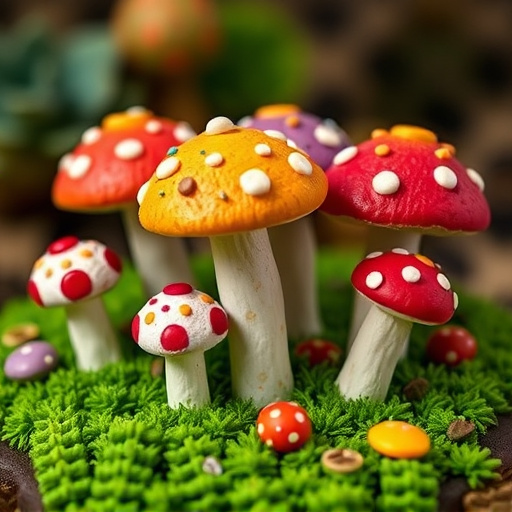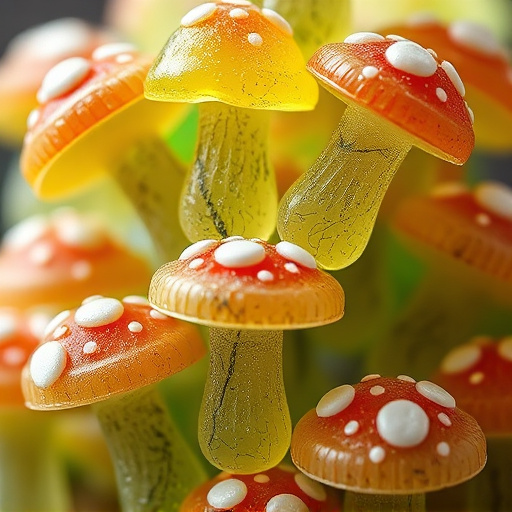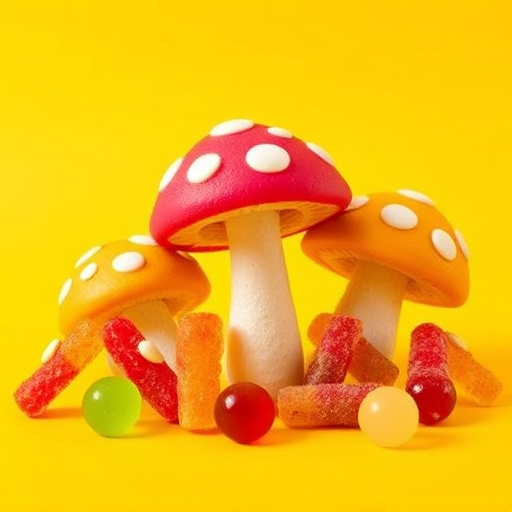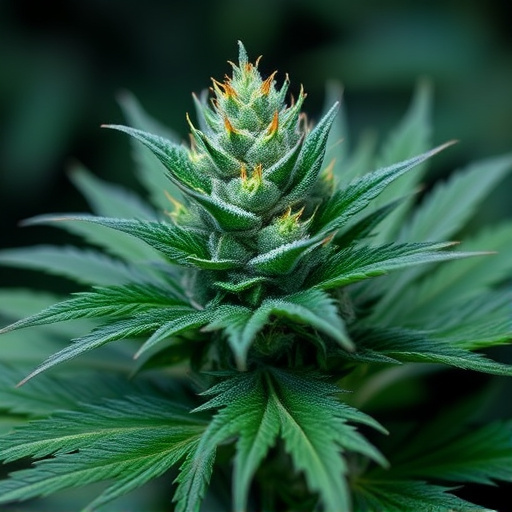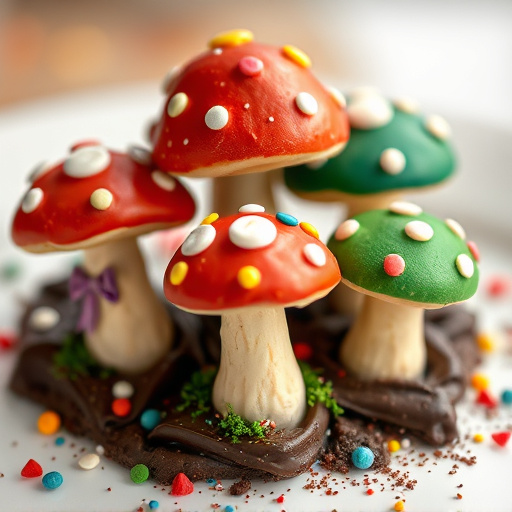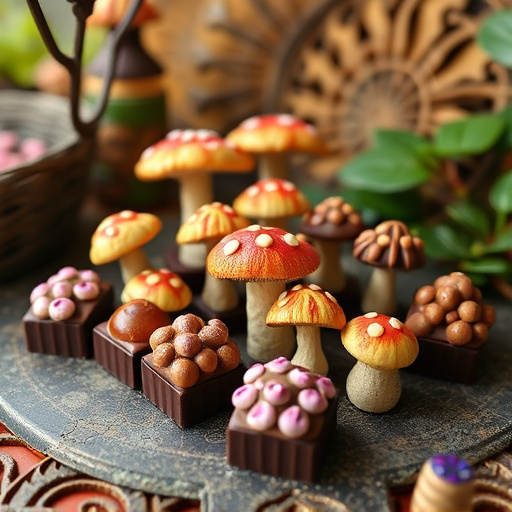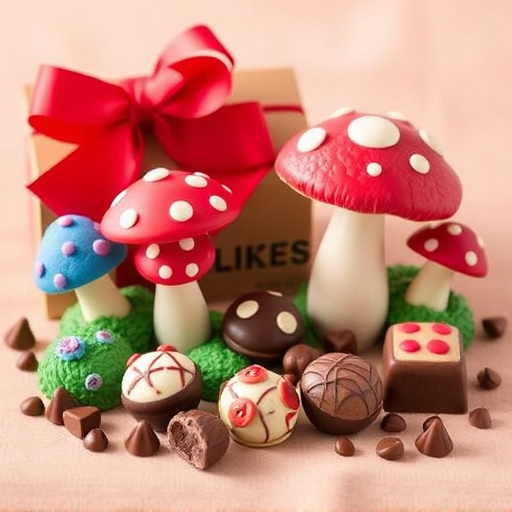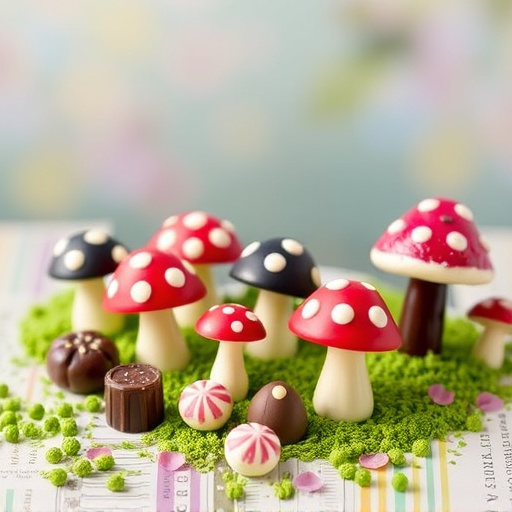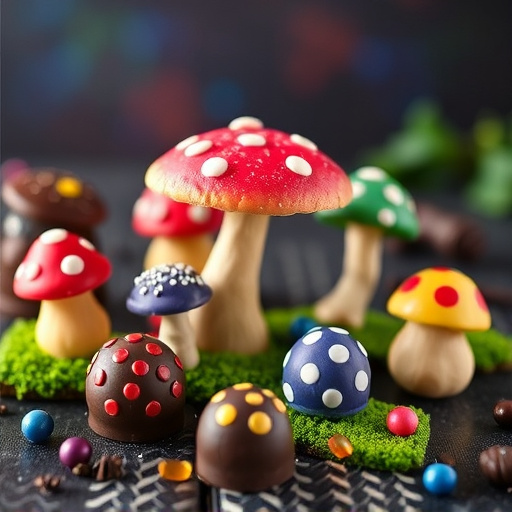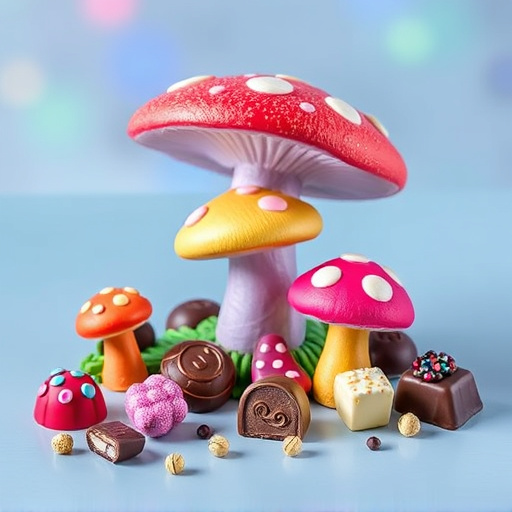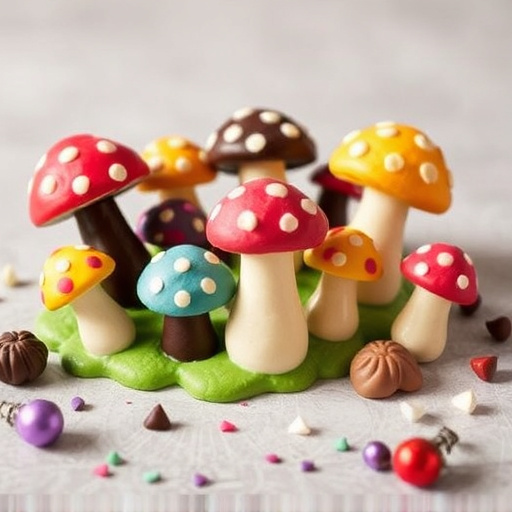Psilocybin, found in magic mushroom chocolates, is a natural psychedelic that enhances neural connectivity by disrupting and reintegrating brain activity. This leads to altered states of consciousness, heightened sensory perception, and potential mental health benefits such as increased creativity, emotional processing, and spiritual insights. Magic mushroom chocolates offer a controlled and accessible way to experience psilocybin's effects, showing promise as a therapeutic tool for depression, anxiety, and addiction by modulating neural connectivity.
“Unleash your senses with the intriguing world of Magic Mushroom Chocolates—a delightful fusion of indulgent treats and psychedelic potential. This comprehensive guide explores the science behind Psilocybin and Neural Connectivity, delving into its profound effects on the brain. We then navigate the art of infusing this compound into chocolates, emphasizing safety and dosage. Our expert review highlights top brands, comparing ingredients and flavors to help you choose the perfect magical experience tailored to your preferences.”
- Understanding Psilocybin and Its Effects on the Brain
- – A brief overview of psilocybin and its psychological effects
- – Explanation of how psilocybin interacts with neural receptors and its impact on brain connectivity
Understanding Psilocybin and Its Effects on the Brain
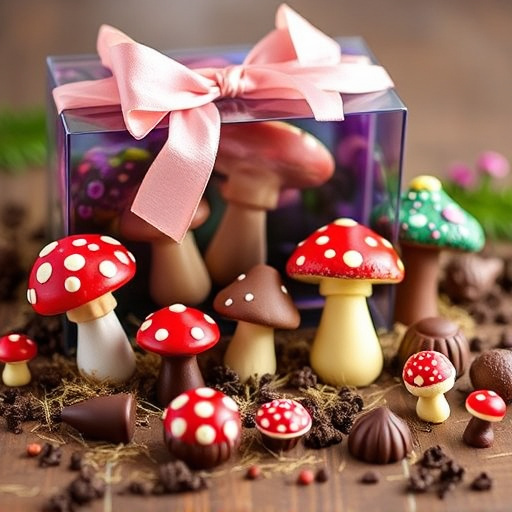
Psilocybin, the active compound found in certain types of magic mushroom chocolates, is a powerful natural psychedelic that has gained significant interest in recent years for its potential therapeutic effects on the mind and brain. When consumed, psilocybin interacts with serotonin receptors in the brain, leading to altered states of consciousness and heightened sensory perception. One of the most intriguing aspects of psilocybin’s impact is its ability to enhance neural connectivity, a phenomenon that has been studied extensively. Research suggests that psilocybin can increase communication between different brain regions, fostering a sense of unity and interconnectedness. This effect is thought to underlie many reported experiences during psychedelic trips, including heightened creativity, emotional processing, and spiritual insights.
The concept of neural connectivity refers to the way different areas of the brain interact and communicate with each other. Psilocybin has been shown to disrupt normal patterns of neural activity, allowing for new connections to form and existing ones to strengthen. This disruption-and-reintegration process may be key to unlocking therapeutic benefits. In the context of magic mushroom chocolates, consumers can expect not only a pleasant sensory experience but also potential mental and emotional shifts that are currently being explored in clinical settings for conditions such as depression, anxiety, and addiction.
– A brief overview of psilocybin and its psychological effects
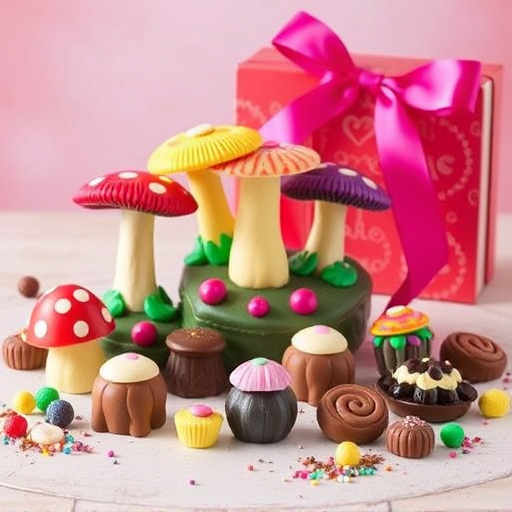
Psilocybin, a natural compound found in certain types of mushrooms commonly known as magic mushrooms, has gained significant attention for its potential therapeutic effects on mental health and well-being. When consumed, psilocybin interacts with serotonin receptors in the brain, leading to altered states of consciousness and heightened sensory perception. These experiences can range from profound insights and spiritual awakenings to vivid visual hallucinations. Research suggests that psilocybin can enhance neural connectivity, fostering deeper understanding and connection between different areas of the brain. This phenomenon is particularly intriguing in the context of magic mushroom chocolates, where the subtle effects of psilocybin are combined with the sensory experience of fine chocolate, potentially offering a novel approach to mindfulness and emotional exploration.
The concept of incorporating psilocybin into edible forms like chocolates caters to those seeking alternative methods to explore consciousness and mental wellness. Magic mushroom chocolates provide a controlled and accessible way to experience the psychological effects of psilocybin, allowing individuals to engage in introspective journeys while enjoying a delicious treat. Moreover, the focus on neural connectivity suggests that these chocolates could potentially facilitate therapeutic conversations and self-reflection post-consumption, making them an innovative tool in the field of mental health exploration and treatment.
– Explanation of how psilocybin interacts with neural receptors and its impact on brain connectivity
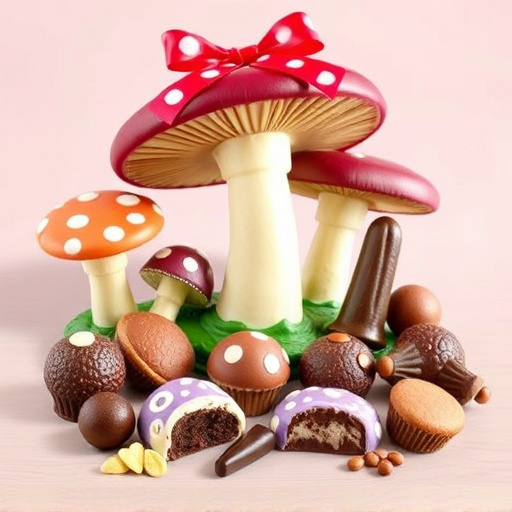
Psilocybin, a natural compound found in certain species of mushrooms known as magic mushrooms, has been a subject of interest in psychopharmacology for its unique ability to alter consciousness and promote profound experiences. When psilocybin enters the body, it is metabolized into psilocin, which acts as a partial agonist at serotonin receptors, particularly the 5-HT2A receptors, in the brain. This interaction leads to a variety of effects, including altered perception, enhanced creativity, and heightened emotional awareness.
One intriguing aspect of psilocybin’s mechanism is its impact on neural connectivity. Research suggests that psilocin can induce changes in brain activity by modulating the communication between different brain regions. It facilitates the opening of synaptic gaps, allowing for increased neural transmission and interaction. This effect has been linked to improvements in mood, reduced anxiety, and enhanced cognitive flexibility. The ability of magic mushroom chocolates, which contain psilocybin, to influence neural connectivity could offer therapeutic potential for various mental health conditions, providing users with profound insights and transformative experiences.
When it comes to exploring the potential therapeutic benefits of psilocybin, particularly through innovative formats like Magic Mushroom Chocolates, understanding the science behind its interaction with neural receptors is key. Psilocybin has shown promise in enhancing neural connectivity, as research suggests, offering a unique approach to mental health treatments. While these chocolates may not be for everyone, they represent an exciting development in combining ancient remedies with modern wellness practices.
